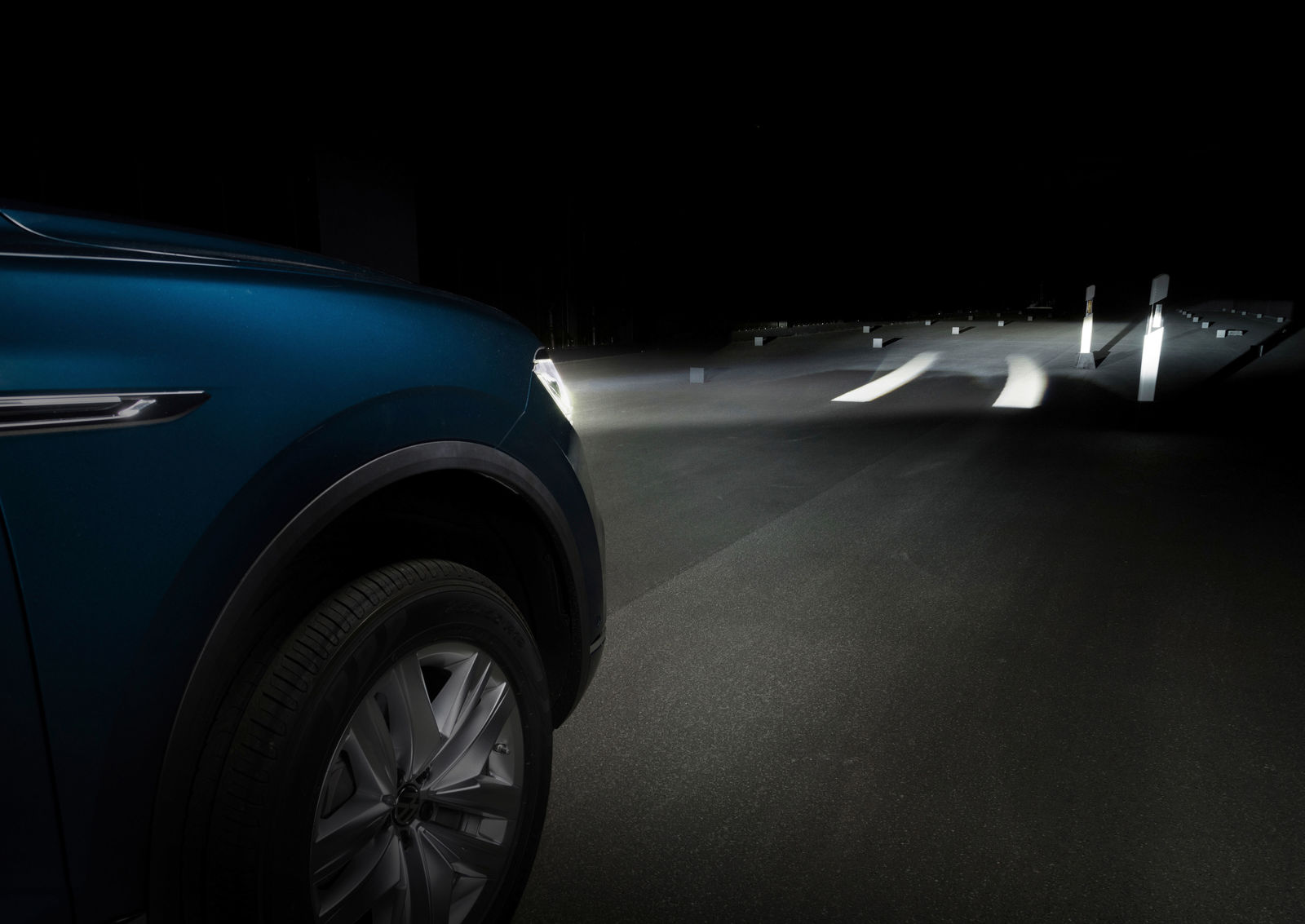The light of the future will be able to communicate
Volkswagen has developed light into a characteristic feature of all the brand’s vehicles. In parallel, new interactive lighting technologies ensure that road safety is improved by vehicle lighting. At the same time, pioneering LED lighting systems such as the IQ.Light from the latest Touareg open up new, fascinating avenues for vehicle design. Volkswagen Chief Designer Klaus Bischoff: "The light of the future is developing into a means of communication. It will interact with the driver and other road users – whether in a car, on a motorcycle or a bicycle – as well as pedestrians, thereby significantly improving safety. At the same time, we will integrate the lighting functions more progressively into the design of the vehicles than ever before." The new Touareg embodies the current status quo of innovative Volkswagen lighting technologies both visually and technically. In this large SUV, lighting design and functions merge more coherently than ever before to form a technical and visual unit. Volkswagen is also answering the question of what tomorrow's interactive lighting concepts might look like with the first studies of a new generation of electric vehicles: the ID. family.
The evolution of light runs parallel to the evolution of safety
Volkswagen engineers and designers use the complete range of technical possibilities to massively improve safety with light. On the one hand, it is necessary to innovatively further develop the lighting functions of today's cars and thus improve road safety today. Intelligent lighting systems and light-based assist systems can do just that. Of course lighting designers and engineers also have an eye on the future. The assisted driving cars of tomorrow will confront road users with new everyday situations – such as a lack of eye contact with the driver. This is where new, interactive lighting functions come into play. These new lighting systems have the potential to communicate empathetically with people, providing feedback and building trust in assisted driving cars. The new exterior lighting features also allow for the customisation of the vehicle through customisable lighting compositions and scenarios. A team of 15 designers is specifically tasked with light design and lighting staging to further enhance the emotion, individuality and functionality of tomorrow’s Volkswagens. The new lighting systems will include micro-pixel HD headlights with up to 30,000 light points and high-performance LED headlights as a low-cost alternative to cost-intensive laser light. For the first time, the micro-pixel HD headlights will project information directly onto the road, significantly improving safety. New systems such as the matrix tail light cluster will also revolutionise tail lights. As soon as road traffic regulations permit, customisable signatures are to be used to integrate warning signs into the tail light clusters. So, for example, these could defuse dangerous situations such as at the end of a traffic jam via car-to-car communication. New assist functions such as "Optical Park Assist", which works with micro-lenses, will make manoeuvring easier and safer, too.
From static to intelligent light in eight decades
Eight decades lie between the first headlights of the Beetle and the IQ.Light of the Touareg. Over this time, lighting functions have developed from the static lights of the first Volkswagen to highly complex lighting systems, some of which already react interactively. The new Touareg with its IQ.Light shows this par excellence. If it has the Night Vision system on board, the LED matrix headlights automatically ‘flash’ at pedestrians (without dazzling them) in potentially dangerous situations to draw the driver's attention to them. As outlined above, the evolution of light will continue to progress significantly in the future.
Volkswagen has never made this progress dependent on the driver's budget. The best example of this is the Golf. It has always been a reflection of technical progress in the field of light development. Progress that has always been, and will remain, affordable. The early generations of the Golf featured halogen headlights that, over time, became brighter. The first xenon headlights followed and, with them, the revolution of light. Then came LED tail light clusters, LED daytime running lights and – with the e-Golf – the first LED headlights. What's more it is clear that IQ.Light – one of the best lighting systems of our time – will also turn night into day in the Golf class in the medium term.
In-house Volkswagen light tunnel shortens development times
In order to prepare for the challenges of the future, Volkswagen opened its own Center of Lighting Excellence at the Wolfsburg plant in 2014. The 100-metre long, 15-metre wide and 5-metre high light tunnel has been in operation since then in the heart of the Research & Development department. In this tunnel, the lighting systems of today and tomorrow are tested on a real road simulation. The tests can be precisely reproduced and repeated. In this way, systems can be compared and evaluated better than ever before. The Center of Lighting Excellence is also an ideal place to investigate the light perception of drivers and pedestrians. In addition, interior systems such as background lighting, head-up displays and infotainment systems can also be tested under repeatable conditions. The light tunnel also shortened the development time for new headlight, tail light and interior lighting systems, as the number of time-consuming night drives could be reduced. Progress in light development can thus be implemented even more quickly into series production technologies such as the new IQ.Light – providing increased safety that benefits all road users.
